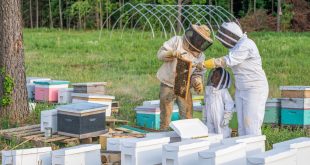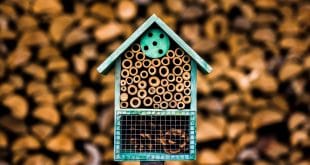Among the many predatory animals that are bad news for honeybees, bears rank quite high. Whether a grizzly or black bear, honeybees do not look forward to the day a bear visits their beehive. At best, the bear gets to the brood quickly and eats their fill and then leaves the beehive. In most cases however, a honeybee colony is lost when a bear attacks a beehive. While the bear eats honey, its main target is usually the larvae in the brood chambers. The high protein content of larvae and honeybee eggs makes them prime targets for bears. This article looks at how bears damage beehives and the honeybee colonies in them. It also shares tips on how to protect honeybees from bears.
Read More »The Importance of Beehive Foundation
Beekeepers are faced with many choices about which beekeeping equipment to use. These decisions are best made with information and experience. One important decision is whether to practice the use of beehive foundation in beekeeping. Let us take a look at what beehive foundation is, its use in beekeeping and …
Read More »The Importance of Keeping Records as a Beekeeper
Dive into the essential practice of record-keeping in beekeeping with our insightful article. It highlights the benefits of meticulous record-keeping and introduces a helpful app that makes this task easier and more efficient. Ideal for both novice and experienced beekeepers, this guide emphasizes how tracking hive health, productivity, and maintenance activities can significantly improve your beekeeping success.
Read More »How to Clean a Mason Bee House
Of all the domesticated bees in existence, the mason bee is perhaps one of the easiest to manage and maintain. It neither demands sophisticated tools nor require specialized skills to keep. In most cases, the mason bee will demand maintenance that takes about 3 hours or less and this is done about once a year. Of course, this will depend on the number of mason bee houses you have. Mason bees are a target to many pests, parasites and predators, and hence the need for maintenance. This is carried out in the fall and winter months. In this article, we'll discuss how to clean a mason bee house and why it is important to do so.
Read More »Beehive Split – How to Split a Hive
Learn the art of hive splitting in DIY beekeeping! This comprehensive guide walks you through the steps to successfully divide a beehive, ensuring the health and growth of your honeybee colonies. Whether you're a beginner or an experienced beekeeper, this article provides clear instructions, tips, and insights into hive management. Discover how to prevent swarming, increase your bee population, and promote a thriving apiary.
Read More » BeeKeepClub Resources and Guides for Beekeepers
BeeKeepClub Resources and Guides for Beekeepers





